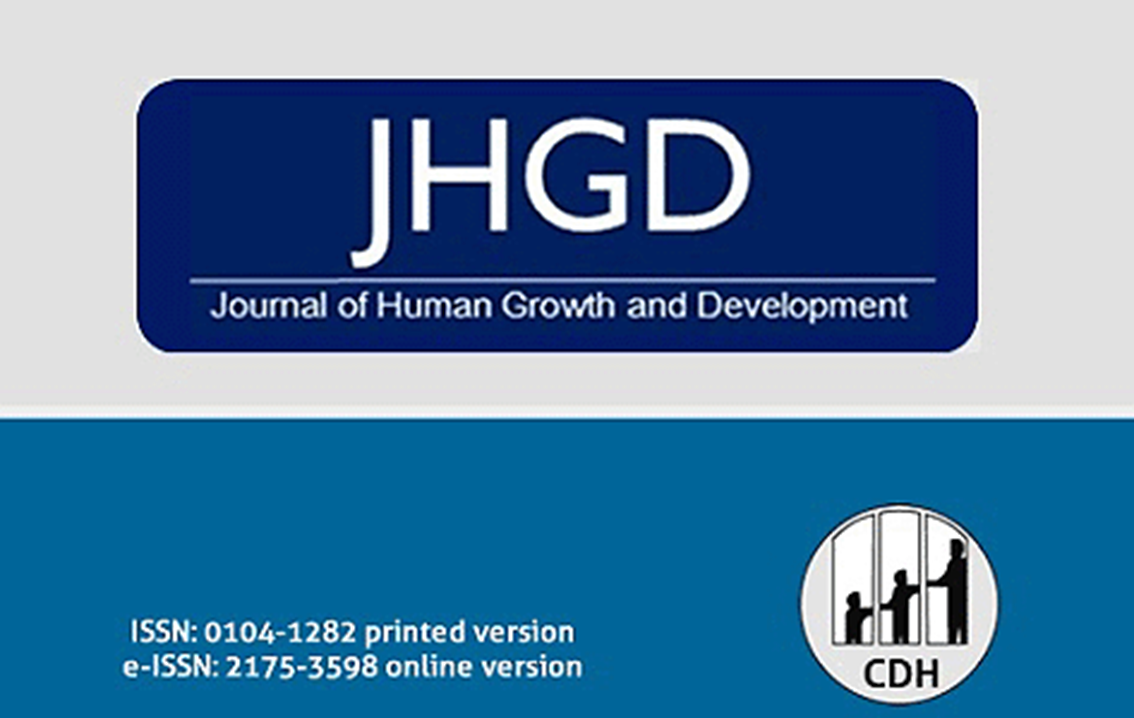Deep endometriosis: clinical and epidemiological findings of diagnosed women according to the criteria of the international deep endometriosis analysis group (IDEA)
DOI:
https://doi.org/10.36311/jhgd.v32.13312Keywords:
Endometriosis, nutritional epidemiology, Ultrasonography, Dysmenorrhea, Dyspareunia, Pelvic Pain, InfertilityAbstract
Introduction: endometriosis occurs when tissue similar to the endometrium affects the peritoneum, which can infiltrate structures and organs such as the bowel, ureter, bladder or vagina and is usually accompanied by an inflammatory process. It is estimated that the disease affects 6 to 10% of women of reproductive age and more than 50% of infertile women. The clinical and epidemiological data of patients with DE come from studies whose women were selected by surgery, therefore subject to selection bias. Transvaginal pelvic ultrasound with bowel preparation (TVUBP) has high specificity and sensitivity values.
Objective: analyze the clinical and epidemiological profile of patients with DE diagnosed through the TVUBP.
Methods: a cross-sectional study that analyzed 227 patients with an ultrasound diagnosis of deep endometriosis.
Results: infertility affected 43.8% of women. Painful symptoms considered as moderate or severe (visual analogue scale, VAS, >3) had the following prevalence and mean values on the VAS scale, respectively: dysmenorrhea in 84.7% (6.9), dyspareunia in 69.1%, (4.2) menstrual dyschezia in 60.7% (4.3) and menstrual dysuria in 35.7% of patients. A history of multiple surgeries occurred in 10.4% and only 6.8% of patients had undergone physiotherapy for the pelvic floor.
Conclusion: the DE population had a high prevalence of infertility and pain symptoms, findings that reflect the social impact on the quality of life and family planning of these women. The high frequency of history of multiple surgical approaches and the low incidence of history of pelvic physiotherapy in the population with DE, contrary to the currently established ideal treatment recommendations, indicate the difficulty of access for patients to specialized centers.
Downloads
References
Sampson, J. A. Peritoneal endometriosis due to premenstrual dissemination of endometrial tissue into the peritoneal cavity. Am. J. Obstet. Gynecol.14, 422–469 (1927).
Giudice, L. C. & Kao, L. C. Endometriosis. Lancet364, 1789–1799 (2004).
Kuznetsov L, Dworzynski K, Davies M, Overton C. Diagnosis and management of endometriosis: Summary of NICE guidance. BMJ (Online). 2017; 358:1–5.
Fauconnier A, Chapron C. Endometriosis and pelvic pain: Epidemiological evidence of the relationship and implications. Human Reproduction Update. 2005; 11(6): 595–606.
Giudice, L. C., & Ph, D. (2010). Endometriosis. N Engl J Med 2010; 362: 2389-98.
CHAPRON, C. et al. Rethinking mechanisms, diagnosis and management of endometriosis. Nature Reviews Endocrinology, v.15, n.11, p.666-682, 2019.
MABROUK, M. et al. Painful Love: Superficial Dyspareunia and Three Dimensional Transperineal Ultrasound Evaluation of Pelvic Floor Muscle in Women with Endometriosis. Journal of Sex & Marital Therapy, v.46, n.2, p.187-196, 2020.
Bazot M, Thomassin I, Hourani R, Cortez A, Darai E. Diagnostic accuracy of transvaginal sonography for deep pelvic endometriosis. Ultrasound Obstet Gynecol 2004; 24(2): 180–185.
DESLANDES, A. et al. (2020). Current Status of Transvaginal Ultrasound Accuracy in the Diagnosis of Deep Infiltrating Endometriosis Before Surgery. Journal of Ultrasound in Medicine, 1–14.
ABRAO, M. S. et al. Comparison between clinical examination, transvaginal sonography and magnetic resonance imaging for the diagnosis of deep endometriosis. Hum Reprod, v.22, n.12, p. 3092-3097, 2007
Goncalves, M. O. D. C., Podgaec, S., Dias, J. A., Gonzalez, M., & Abrao, M. S. (2010). Transvaginal ultrasonography with bowel preparation is able to predict the number of lesions and rectosigmoid layers affected in cases of deep endometriosis, defining surgical strategy. Human Reproduction, 25(3), 665–671.
Chamié, L. P., Pereira, R. M. A., Zanatta, A., & Serafini, P. C. (2010). Transvaginal US after Bowel Preparation for Deeply Infiltrating Endometriosis: Protocol, Imaging Appearances, and Laparoscopic Correlation. RadioGraphics, 30(5), 1235–1249.
Fauconnier A, Chapron C, Dubuisson JB, Vieira M, Dousset B, Bréart G. Relation between pain symptoms and the anatomic location of deep infiltrating endometriosis. Fertility and Sterility. 2002; 78(4): 719–26.
CHAPRON, C. et al. (2001). Does deep endometriosis infiltrating the uterosacral ligaments present an asymmetric lateral distribution? British Journal of Obstetrics and Gynaecology, 108(10), 1021–1024.
Chapron C, Fauconnier A, Vieira M, Barakat H, Dousset B, Pansini V, et al. Anatomical distribution of deeply infiltrating endometriosis: Surgical implications and proposition for a classification. Human Reproduction. 2003; 18(1): 157–61.
Chapron C, Chopin N, Borghese B, Foulot H, Dousset B, Vacher-Lavenu MC, et al. Deeply infiltrating endometriosis: Pathogenetic implications of the anatomical distribution. Human Reproduction. 2006; 21(7): 1839–45.
TISSOT, M. et al. Clinical presentation of endometriosis identified at interval laparoscopic tubal sterilization: Prospective series of 465 cases. Journal of Gynecology Obstetrics and Human Reproduction, 46(8), 647–650, 2017.
BAZOT, M, I. et al. Diagnostic accuracy of transvaginal sonography for deep pelvic endometriosis. Ultrasound in Obstetrics and Gynecology, v.24, n.2, p.180-185, 2004.
Martinez, J. E., Centola Grassi, D., & Marques, L. G. (2011). Análise da aplicabilidade de três instrumentos de avaliação de dor em distintas unidades de atendimento: ambulatório, enfermaria e urgência. In Rev Bras Reumatol (Vol. 51, Issue 4).
Haefeli, M., & Elfering, A. (2006). Pain assessment. In European Spine Journal (Vol. 15, Issue SUPPL. 1).
Chamié, L. P. (2019). Ultrasound evaluation of deeply infiltrative endometriosis: technique and interpretation. Abdominal Radiology.
GUERRIERO, S. et al. Systematic approach to sonographic evaluation of the pelvis in women with suspected endometriosis, including terms, definitions and measurements: a consensus opinion from the International Deep Endometriosis Analysis (IDEA) group. Ultrasound in Obstetrics & Gynecology, v. 48, n.3, p. 318-332, 2016.
Ros, C., Guirior, C., Mension, E., Rius, M., Valdés-Bango, M., Tortajada, M., Matas, I., Martínez-Zamora, M. Á., Gracia, M., & Carmona, F. (2021). Transvaginal ultrasound for the diagnosis of endometriosis in the uterosacral ligaments, torus uterinus and posterior vaginal fornix: a prospective study. Ultrasound in Obstetrics & Gynecology.
Leonardi, M., Martins, W. P., Espada, M., Arianayagam, M., &Condous, G. (2020). Proposed technique to visualize and classify uterosacral ligament deep endometriosis with and without infiltration into parametrium or torus uterinus. In Ultrasound in Obstetrics and Gynecology (Vol. 55, Issue 1, pp. 137–139). John Wiley and Sons Ltd.
BAZOT, M. et al. Diagnostic accuracy of physical examination, transvaginal sonography, ectal endoscopic sonography, and magnetic resonance imaging to diagnoses deep infiltrating endometriosis. Fertility and Sterility, v. 92, n.1, p.1825-1833, 2009.
MORGAN-ORTIZ, F. et al. (2018). Clinical characteristics and location of lesions in patients with deep infiltrating endometriosis using the revised Enzian classification. Journal of the Turkish German Gynecology Association, 20(3), 133–137.
Dovey, S., &Sanfilippo, J. (2010). Endometriosis and the adolescent. ClinicalObstetricsandGynecology, 53(2), 420–428.
Bazot, M., Lafont, C., Rouzier, R., Roseau, G., Thomassin-Naggara, I., Daraï, E. (2008). Diagnostic accuracy of physical examination, transvaginal sonography, rectal endoscopic sonography, and magnetic resonance imaging to diagnose deep infiltrating endometriosis.
HUDELIST, G. et al. Diagnostic delay for endometriosis in Austria and Germany: Causes and possible consequences. Human Reproduction, v.27, n.12, p.3412-3416, 2012.
GHAI, V. et al. (2020). Diagnostic delay for superficial and deep endometriosis in the United Kingdom. Journal of Obstetrics and Gynaecology, 40(1), 83–89.
NNOAHAM, K. E. et al. (2011). Impact of endometriosis on quality of life and work productivity: A multicenter study across ten countries. Fertility and Sterility, 96(2).
CHAPRON C. et al. Oral contraceptives (OC) and endometriosis: the past use of OC for treating severe primary dysmenorrheal appears as a marker associated with endometriosis, especially deep infiltrating endometriosis. HumReprod 2011; 26:2028e35.
Vercellini, P., Eskenazi, B., Consonni, D., Somigliana, E., Parazzini, F., Abbiati, A., & Fedele, L. (2010). Oral contraceptives and risk of endometriosis : a systematic review and meta-analysis. 00(0), 159–170.
PILLET, M. C. L.et al. (2014). A clinical score can predict associated deep infiltrating endometriosis before surgery for an endometrioma. 0(0), 1–11.
YONG, P. J. et al. (2015). Concurrent deep-superficial dyspareunia: Prevalence, associations and outcomes in a multidisciplinary vulvodynia program. The Journal of Sexual Medicine,12 (1), 219–227.
Downloads
Published
Issue
Section
License
Copyright (c) 2022 Pontes CFR, Chamié LP, Aguiar M, Silva EJC, Leite DFB, de Carvalho Silva SAL, Figueiredo JL

This work is licensed under a Creative Commons Attribution 4.0 International License.







